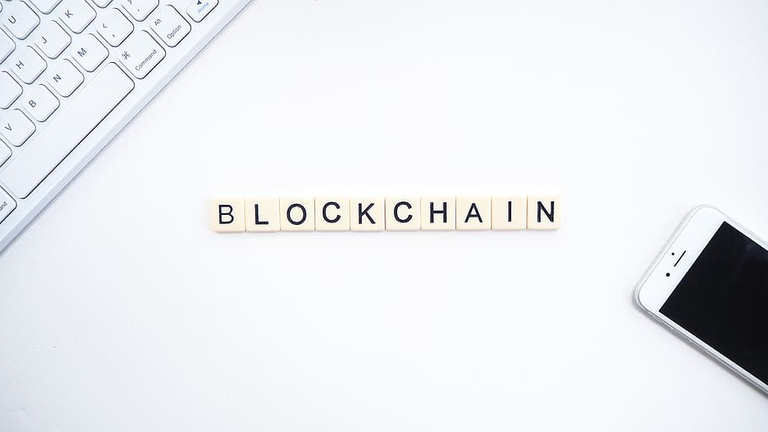The Challanges of Tracing Payments Made with Blockchain Technology

from PxHere
Hello buddies! How are things with you today? Let us take a look at this interesting aspect of blockchain technology and the challenges it imposes when it comes to tracing transactions in the blockchain. This article will be a voyage that sojourns you into the world of blockchain technology, to help you better understand and appreciate what this topic means to us. So get ready for an exciting trip
Over the past few years, blockchain technology has gained popularity due to its high employment rate, and it has gotten a lot of attention due to its ability to make fund movement safe and independent and, as well, difficult to trace transactions carried out on the space.
Blockchain is basically a digital log that keeps track of activities, and so it is distributed across many computers. This technology has altered how some businesses operates by making them safer, more transparent, and more efficient.
Before we get into the details of the challenges associated with blockchain transactions, let's take a moment and review what we already know on this subject.
Imagine you have a group of friends who want to keep track of how much money they give and take from each other. Instead of depending on a single person to keep records of these transactions, they chose to make a logbook, which is a special system called the blockchain.
Everyone in the group has a copy of the same logbook, which is like a digital diary. When someone gives or borrows money, they write down the details of the exchange in their own copy of the ledger. But here's the interesting thing to know: before the transaction is added to the record, it has to be checked by the other people in the group. This puts a lot of stress on being clear. Blockchain makes sure that all participants in the network can see the details of every exchange.
This level of transparency develops trust and responsibility among users because it makes it much easier to see how transactions are made. By sharing this information, the system is made safer and more effective for everyone. Cryptography is a very important part of making transactions more secure and keeping their purity in blockchain. By using these methods, an extra layer of security is added, making it much harder for people who aren't supposed to have access to private information to get to it or change it. This helps protect the security and trustworthiness of transactions by making sure they are private and real.
Factors which make it difficult to track down blockchain transactions
Understanding these things can help you see how complicated this process really is.
The concept of pseudonymity and reusability is one of the first challenges we have to face in the world of blockchain. Pseudonymity implies using a fictional name or identity online, which can give you some privacy and security. On the other hand, address reusability means that you can use the same digital address or name more than once. This can be both good and bad, depending on the situation.
Let's learn more about these concepts. The fact that names employed in transactions are not directly linked to real-world identities is one of the most fascinating things about blockchain technology. This means that instead of using names or social security numbers, activities on the blockchain are done with unique digital addresses. These names add a layer of privacy and security that makes it harder for someone to link a transaction to a specific person. Due to this idea, blockchain technology is especially appealing to people who value privacy and want to keep some secrecy in their financial activities.
Instead, businesses and people use public key addresses that are encrypted. In the digital world, these addresses are a key part of making sure that contact and transfers are safe. By using public key cryptography, people can share their public key names with others in a safe way. This makes it possible to send protected messages and make secure purchases. The idea behind this technology is asymmetric encryption, and because of this, it is hard to link activities to specific people or organisations. Also, users often make new addresses for each transaction, which makes it harder to track down the transfer.
Mixers and tumblers also make it harder to track payments made through the blockchain. When it comes to financial activities, there are services that let people keep their money private by mixing it with the money of other people. This method, called "obfuscation," helps hide where the money came from, making it harder to track it back to the person who used it. By using these services, people can keep their financial activities more private and maintain a certain amount of anonymity. This process makes it very hard to track the flow of money and, in effect, hides the past transactions.
Also, privacy-focused coins like Monero and Zcash have come out, making it easier to stay private and anonymous. By using these cryptocurrencies, people can make their trades more private and make it difficult for others to track their activity.
Problems that investigators and police have to deal with
As for people who work in investigations and law enforcement, they often face different problems in their jobs when it comes to tracing transactions on the blockchain. These tasks can be both hard and complicated, so they have to keep changing and coming up with new ways to do their jobs well. One of the main problems they face is cybercrime. Criminals are using the blockchain to conduct business, which prevents investigators from accessing their identities.
Tracking funds through transfers between various wallets can add another level of complexity because when a transfer is made, new addresses are created, which makes it more difficult and time-consuming to keep trace those changes.
Possible solutions and what might happen in the future
Payments made on the blockchain can be hard to track down, but experts and developers are working hard to solve these problems. They know how important it is to be able to track payments and have been working hard to find answers. By always trying to improve the technology, they hope to make blockchain transfers safer and more private.
Furthermore, I'd like to share with us some possible answers and future changes that could make it much easier to track payments made through blockchain. By using these tactics, the financial environment on the blockchain can be more open and safe.
Better privacy protection: Blockchain networks can use advanced privacy methods, like zero-knowledge proofs or ring signatures, to protect users' names while still letting transactions be tracked. With these methods, payment histories can be checked without putting personal information at risk.
Standards for interoperability: Creating standard methods for cross-chain transactions can make it easier to track transactions across different blockchain networks. This would make it possible to track funds across multiple platforms. This would increase openness and lower the risk of fraud.
Hybrid Solutions: Some groups are working on hybrid solutions that combine the openness and decentralisation of blockchain with some level of traceability and privacy. These methods try to find a good mix between anonymity and responsibility, effectively handling the worries about tracing payments.
Better rules for cryptocurrencies: Governments and regulatory groups are starting to see that the blockchain needs the right rules to stop illegal activities. Strong KYC (Know Your Customer) and AML (Anti-Money Laundering) methods can help connect real-world names and blockchain addresses more closely.

Source
In conclusion, it can be hard to track payments or other transactions made with blockchain technology because blockchain addresses are not real names. And again, mixers and tumblers are used, and privacy-focused coins are becoming more popular. Investigators and law enforcement agencies have a hard time putting real-world names to activities. But improvements in laws, blockchain analytics tools, teamwork between parties, and the creation of hybrid solutions have the potential to make it easier to track things in the future.
Even though it might not be easy to improve traceability, the blockchain community, lawmakers, and experts will continue to push the limits and find answers to make sure that blockchain technology is used in a safe and accountable way.
References
- https://cointelegraph.com/explained/are-bitcoin-transactions-anonymous-and-traceable#:~:text=When%20you%20don't%20have,identity%20behind%20a%20wallet%20address.
- https://www.wsj.com/articles/why-hackers-use-bitcoin-and-why-it-is-so-difficult-to-trace-11594931595
- https://originstamp.com/blog/how-to-trace-bitcoin-transactions/
- https://blog.chainalysis.com/reports/blockchain-analysis-trace-through-service-exchange/
- https://www.olliv.com/beyond-the-basics/technology/is-bitcoin-traceable


I am a complete beginner who resides in Africa's Western Hemisphere. My name is James, but you may reach out to me through the Facebook page [James Kossy] (https://www.facebook.com/christ.messenger.904) Physics, chemistry, and biology are the three topics that I find most enjoyable. My current studies are taking place at the university level, with the intention of becoming a recognized professional in physiotherapy. I am fascinated by all things technological, and I take pleasure in contributing to the fascinating technological advancements that are taking place throughout the world today. In my spare time, I'd like to learn more about programming and help others with any technical problems they may be having. 💞 ***🌹❤️ Thank you so much to everyone who has supported me thus far. ****💞 At the moment, I don't have the right words to say how much I appreciate all of your help. You never cease to astonish me with your generosity. For me, this has turned into a haven of enjoyment. Thanks to colleagues like you, this has all been possible. You've been a great support for me. Everything you have done for me and my family has been greatly appreciated, and I will always be grateful to you. 💕.
Posted Using LeoFinance Alpha

Dear @jsalvage !
I am having hard time understand about asymmetric encryption, Mixers and tumblers!😅
Thank you for article!